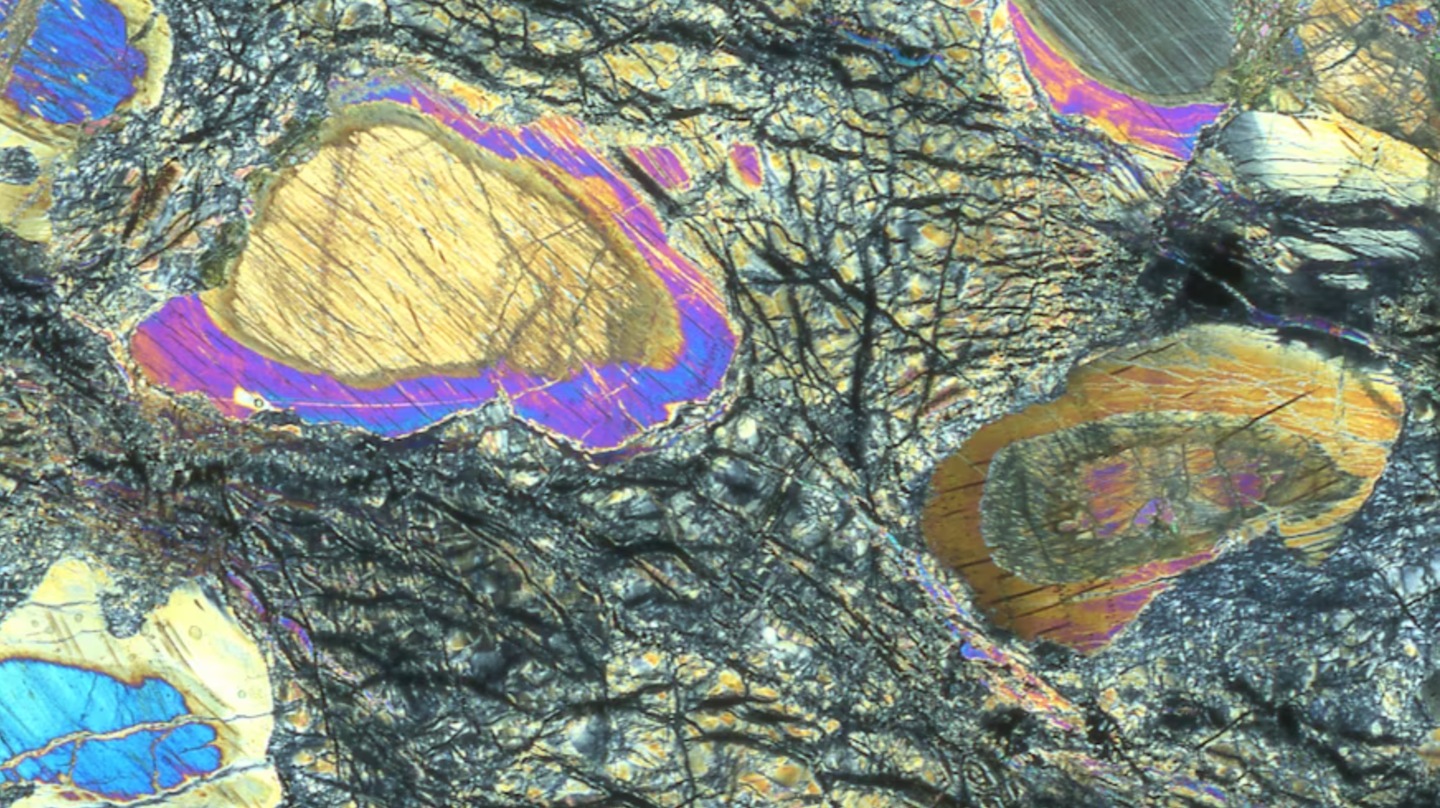First-ever rocks recovered from the Earth’s mantle could reveal secrets of Earth’s history
Scientists have made a groundbreaking discovery by recovering the first extensive section of rocks originating from Earth’s mantle

The rocks recovered from the mantle bear a closer resemblance to those that were present on early Earth rather than the more common rocks that make up our continents today. (CREDIT: Professor Johan Lissenberg)
Scientists have made a groundbreaking discovery by recovering the first extensive section of rocks originating from Earth's mantle, the layer beneath the crust that makes up the planet's largest component. This achievement offers a unique opportunity to explore the mantle's role in the origins of life, its contribution to volcanic activity, and its influence on global cycles of essential elements like carbon and hydrogen.
The nearly continuous 1,268-meter stretch of mantle rock was retrieved from a "tectonic window" along the Mid-Atlantic Ridge during the 2023 expedition of the ocean drilling vessel, JOIDES Resolution. This tectonic window is a part of the seabed where mantle rocks are exposed, offering scientists a rare glimpse into Earth's interior.
For over half a century, researchers have attempted to reach and recover samples from the mantle. This record-breaking accomplishment was led by the International Ocean Discovery Program (IODP), a marine research consortium comprising more than 20 countries. Their mission involves retrieving cores—cylindrical samples of sediment and rock—from the ocean floor to study Earth's history.
Following the expedition, the research team has been meticulously cataloging and analyzing the recovered mantle rocks to uncover their composition, structure, and geological context. Their findings, published in the journal Science, have revealed a much more complex history of melting in the mantle than was previously anticipated.
Professor Johan Lissenberg from Cardiff University’s School of Earth and Environmental Sciences, the lead author of the study, expressed the significance of this discovery. He noted, "Recovering these rocks marked a milestone in Earth sciences. But more importantly, these mantle cores provide us with crucial information about the composition and evolution of our planet."
The research uncovered that the recovered rocks contain significantly less of the mineral pyroxene and have unusually high concentrations of magnesium. These characteristics suggest that the mantle underwent much more extensive melting as it ascended towards the Earth's surface than previously predicted. This finding could have profound implications for our understanding of magma formation and the processes leading to volcanism.
Further analysis of these mantle rocks has allowed scientists to trace the movement of magma from its formation deep within the Earth up to the surface. This is particularly important for understanding volcanic activity, especially the kind that occurs on the ocean floor, which accounts for the majority of Earth's volcanism. By studying these rocks, scientists can now link volcanic activity directly to its source in the mantle.
Related Stories:
In addition to shedding light on volcanism, the study has also provided initial insights into how olivine, a common mineral in mantle rocks, interacts with seawater. This interaction triggers chemical reactions that produce hydrogen and other molecules capable of supporting life. It’s believed that such processes might have been crucial in the early stages of life on Earth.
Dr. Susan Q. Lang, an associate scientist in Geology and Geophysics at the Woods Hole Oceanographic Institution, who co-led the expedition, highlighted the importance of these findings. "The rocks retrieved during this expedition resemble those present on early Earth more closely than the more common continental rocks today. Analyzing them offers us a rare glimpse into the chemical and physical environments that could have provided consistent fuel and favorable conditions for the earliest forms of life," she explained.
The international team of more than 30 scientists from the JOIDES Resolution expedition will continue to analyze the recovered cores, tackling a broad range of scientific questions. Dr. Andrew McCaig, an Associate Professor at the University of Leeds and a co-chief scientist on the expedition, emphasized the significance of this research.
He said, "Our new deep hole will serve as a reference for decades in fields as varied as mantle melting processes, chemical exchanges between rocks and the ocean, organic geochemistry, and microbiology. This expedition sets a standard for how international scientific collaboration should be conducted."
The data collected from this expedition will be made fully available to the scientific community, allowing for continued research and discoveries. This achievement not only advances our understanding of Earth's interior but also serves as an exemplary model of international cooperation in science. As the research progresses, it promises to reveal even more about the forces that have shaped our planet and the origins of life itself.
Note: Materials provided above by The Brighter Side of News. Content may be edited for style and length.
Like these kind of feel good stories? Get The Brighter Side of News' newsletter.
Rebecca Shavit
Science & Technology Journalist | Innovation Storyteller
Based in Los Angeles, Rebecca Shavit is a dedicated science and technology journalist who writes for The Brighter Side of News, an online publication committed to highlighting positive and transformative stories from around the world. With a passion for uncovering groundbreaking discoveries and innovations, she brings to light the scientific advancements shaping a better future. Her reporting spans a wide range of topics, from cutting-edge medical breakthroughs and artificial intelligence to green technology and space exploration. With a keen ability to translate complex concepts into engaging and accessible stories, she makes science and innovation relatable to a broad audience.



